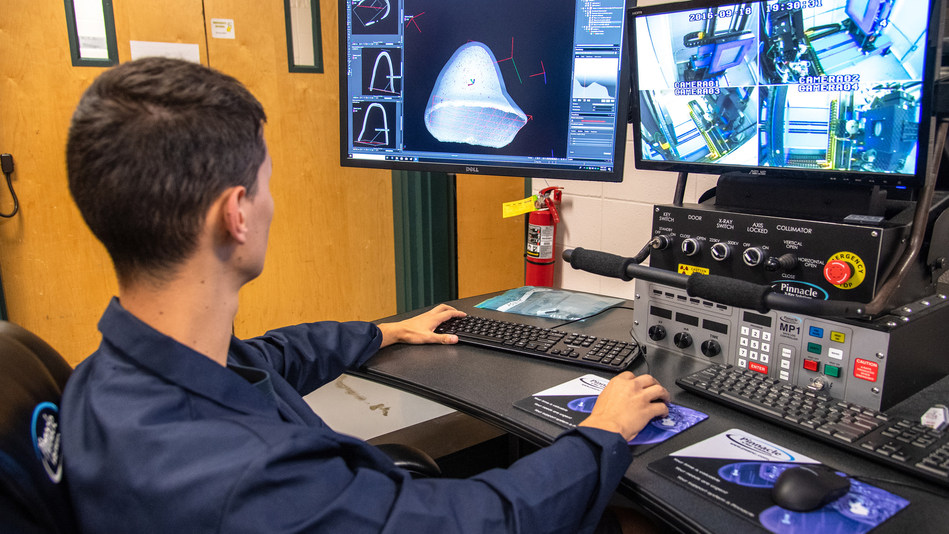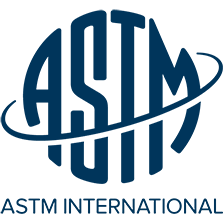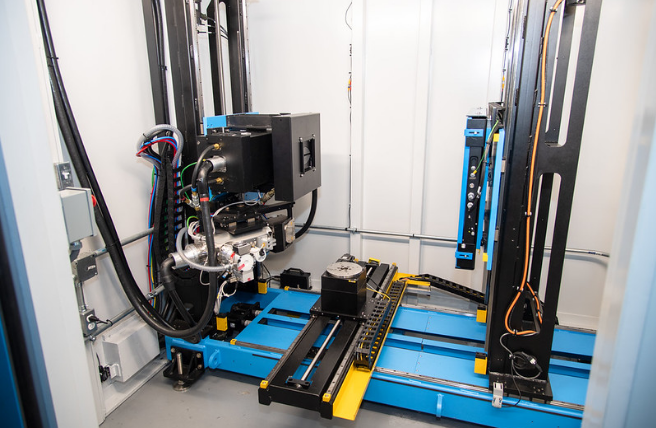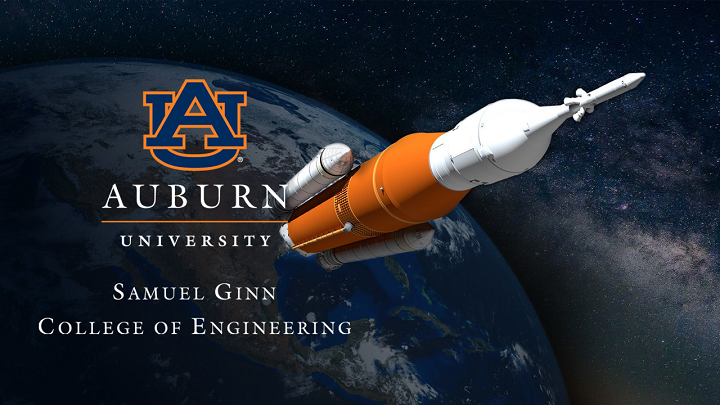Brookhaven scientists use kebab-like structures to advance FFF 3D printing
Auburn University Engineers Inspecting & Monitoring Parts with New CT System
The Auburn Center for Additive Manufacturing, founded in 2015, received another boost recently with the addition of a customized digital radiology vault and specialized additive manufacturing systems all created by researchers at Auburn via a $1.5 million grant from the National Institute of Standards and Technology (NIST). With this addition, Auburn’s Samuel Ginn College of Engineering, an institution consistently ranking among the top engineering institutions in the country, is now able to inspect AM parts through 3D non-destructive interrogation of ‘mission-critical’ metal parts; not only that, they are also able to monitor processes in real time—ultimately, assessing quality throughout production and confirming internal dimensions of each structure.
 Collaborating with the University, the National Institute of Standards and Technology (NIST), NASA, and ASTM International, Auburn’s Center for Additive Manufacturing offers the following:
Collaborating with the University, the National Institute of Standards and Technology (NIST), NASA, and ASTM International, Auburn’s Center for Additive Manufacturing offers the following:
- Innovative research
- Training and education for undergraduate and graduate students
- Development of technology advancing the AM industry
As professor of materials engineering and principal investigator for the NIST grant, Bart Prorok explains that with the new system, the engineering team is able to offer ‘precise design interrogation capabilities’ not possible before—a common benefit of 3D printing and additive manufacturing, and especially when more complex geometries are involved.
“The grant enabled us to purchase this unit and begin to provide metrology and other information that NIST can use in their standardization efforts as well as support our standardization efforts in our AM effort here at Auburn,” Prorok said. “It’s important because we can identify defects made during the fabrication process and we can confirm internal dimensions and structures and quality of what we build overall without destroying it.”
“It’s a real game-changer because while we’re building a component with additive, it’s difficult to monitor what’s happening,” Prorok continued. “With this new system, we can take two-dimensional X-ray pictures of a metal structure for real-time process monitoring or a series of 2D images in 360 degrees of rotation that are then reconstructed into a 3D representation of the build.”

An Auburn University researcher studies a 3D rendering of scans produced by a state-of-the-art $1.5 million X-Ray CT system recently acquired through a grant from the National Institute of Standards and Technology.
Current collaborations with industry leaders like NASA, NIST, the U.S. Army, and ASTM International (along with other well-established organizations in both aerospace and aviation) continue to stimulate research at Auburn, to include a recent grant from NASA of $5.2 million to allow them to continue researching and developing AM processes further, but also techniques in the fabrication of liquid rocket engines.
While many different colleges and universities around the world focus on partnerships to propel digital fabrication and technology further, Auburn has been the recipient of research agreements with NASA, formal partnerships with standards organization ASTM International, and more. What do you think of this news? Let us know your thoughts! Join the discussion of this and other 3D printing topics at 3DPrintBoard.com.
[Source / Images: Auburn University; Cision]
The post Auburn University Engineers Inspecting & Monitoring Parts with New CT System appeared first on 3DPrint.com | The Voice of 3D Printing / Additive Manufacturing.
Additive manufacturing put to the test by new $1.5M x-ray CT system at Auburn University
3D printed molds are helping NASA to insulate its newest deep space rocket
Auburn University Receives NASA Contract to Develop 3D Printing Techniques to Improve Liquid Rocket Engines

L-R: Auburn University’s John Mason and Patrick Scheuermann, director of NASA’s Marshall Space Flight Center in Huntsville, sign a Space Act Agreement [2015 Image: Auburn University]
Back in 2015, Auburn University and NASA signed a Space Act Agreement for the purposes of exploring and advancing additive manufacturing applications and research together. The university has remained committed to 3D printing, and aerospace, over the years, working with NASA in a public-private partnership to establish its National Center for Additive Manufacturing Excellence (NCAME) two years ago for the purpose of improve the performance of 3D printed parts, respond to workforce development needs in the AM industry, and share research results with collaborators.
Now, the university’s Samuel Ginn College of Engineering has announced that NASA awarded a three-year, $5.2 million contract to NCAME to research and create 3D printing techniques to help improve the performance of liquid rocket engines. The work covered under the contract is part of NASA’s Rapid Analysis and Manufacturing Propulsion Technology (RAMPT) project, and is just the latest development to come out of Auburn’s relationship with NASA’s Marshall Space Flight Center.
“This partnership with Auburn University and industry will help develop improvements for liquid rocket engines, as well as contribute to commercial opportunities. The technologies developed by this team will be made available widely to the private sector, offering more companies the opportunity to use these advanced manufacturing techniques,” said Paul McConnaughey, the Deputy Director of Marshall Space Flight Center.
RAMPT is centered around evolving lightweight, large-scale novel and 3D printing techniques for developing and fabricating regeneratively cooled thrust chamber assemblies for use in liquid rocket engines. NCAME already collaborates with more than 70 academic, government, industry, and non-profit organizations, and will now help support the RAMPT project as it works to create a domestic supply chain and specialized manufacturing technology vendors, which will be used by all government agencies, commercial space companies, and academic institutions.
“For decades, Auburn engineers have been instrumental in helping the U.S. achieve its space exploration goals. This new collaboration between NASA and our additive manufacturing researchers will play a major role in developing advanced rocket engines that will drive long-duration spaceflight, helping our nation achieve its bold vision for the future of space exploration,” said Christopher B. Roberts, the dean of the university’s College of Engineering.
Michael Ares, who works in Media Relations for Auburn University, told 3DPrint.com in an email that the Samuel Ginn College of Engineering is a leader in developing and implementing the kind of AM aerospace technology that Auburn and NASA have also been working on “behind the scenes,” which would allow astronauts on long-duration spaceflights to manufacture spare parts when needed.
“Think about how that would have been helpful on Apollo 13…” Ares told us.
GE Avionics is another Auburn partner that’s taken research jointly conducted with the university all the way to production. Additionally, Alabama’s Governor Kay Ivey announced last week that GE Aviation will invest $50 million to expand the additive manufacturing operation at its Auburn facility. All of this goes to show that when it comes to aerospace 3D printing, it seems like Alabama is the place to be right now.
“This contract is a giant leap towards making Alabama the ‘go to state’ for additive manufacturing. We look forward to growing our partnership with NASA, industry and academia as we support the development of our nation’s next rocket engines,” said Mike Ogles, Director of NASA programs in the Samuel Ginn College of Engineering and the RAMPT Project Manager.
The announcement about the university’s new NASA contract was made at the biannual four-day meeting of ASTM International’s F42 Committee on Additive Manufacturing Technologies, which is hosted by the university at the Auburn Marriott Opelika Resort & Spa at Grand National in Opelika. Nima Shamsaei, the Director of NCAME, will lead Auburn’s team for the RAMPT project as the principal investigator.
Discuss this and other 3D printing topics at 3DPrintBoard.com or share your thoughts below.
Auburn receives $5.2M NASA contract, seeks to make Alabama the “go-to-state” for additive manufacturing
Lincoln Memorial University to harness “unparalleled” potential of 3D printing in veterinary elective
3D Printing News Sliced: IKEA, EnvisionTEC, America Makes and a giant elephant
ASTM International’s Additive Manufacturing Center of Excellence Welcomes Strategic Partner NAMIC, Announces First Round of Projects
About a year ago, international standards organization ASTM International announced that it would be setting up an Additive Manufacturing Center of Excellence, and began enlisting partners to help launch the center. The most recent partner to be added to the roster is Singapore’s National Additive Manufacturing Innovation Cluster (NAMIC), which will coordinate the center’s R&D and related activities in Asia as well as invest up to $1.5 million in the first two years.
NAMIC’s Managing Director, Dr. Ho Chaw Sing, and ASTM International’s Director of Global Additive Manufacturing Programs, Dr. Mohsen Seifi, signed a Strategic Partnership Statement last week at NAMIC’s Global Additive Manufacturing Summit.
“We are excited to enter into this partnership with ASTM International,” said Dr. Sing. “We look forward to catalyzing crucial research that helps establish technical standards, guiding additive manufacturing into the future for Singapore, Asia, and the entire world. Our investment into the center’s regional-based activities will support implementation of additive manufacturing technologies globally.”
 NAMIC is the first organization in Asia to join with ASTM, and its role will be to support R&D and standardization activities that will help drive commercialization of additive manufacturing technologies in sectors such as aerospace, maritime and offshore, logistics and fabrication.
NAMIC is the first organization in Asia to join with ASTM, and its role will be to support R&D and standardization activities that will help drive commercialization of additive manufacturing technologies in sectors such as aerospace, maritime and offshore, logistics and fabrication.
“We are thrilled that NAMIC will be leading the Asia-Pacific’s efforts to drive advancements and innovation in additive manufacturing on a global scale,” said Dr. Seifi. “NAMIC’s leadership in aerospace maintenance, repair, and overhaul, maritime and offshore, and other industries will complement the center’s capabilities, and we are pleased to welcome additional investments in this world-class partnership which will accelerate standardization in this fast-growing field.”
The center’s founding partners are Auburn University, NASA, manufacturing technology innovator EWI, and the UK-based Manufacturing Technology Centre. NAMIC and the US National Institute for Aviation Research (NIAR) are the first two strategic partners.
Recently, ASTM International also announced its first round of funding to support research that will help advance the development of standards for additive manufacturing. The investment of $300,000 as well as in-kind contributions will help the Center of Excellence partners to address technical information needs.
“We are very fortunate to work with such renowned organizations to leverage their expertise towards standardization in additive manufacturing,” said Oerlikon engineer Matthew Donovan, who chairs the research and innovation group under ASTM International’s additive manufacturing technology committee (F42).
 The initial round of projects approved by the committee involve four areas: feedstock, process qualification, post-processing and testing. The Manufacturing Technology Centre (MTC) will research the development of quality assessment standards for metal powders used for additive manufacturing. The research will contribute to a standard guide for evaluating powder quality and recyclability.
The initial round of projects approved by the committee involve four areas: feedstock, process qualification, post-processing and testing. The Manufacturing Technology Centre (MTC) will research the development of quality assessment standards for metal powders used for additive manufacturing. The research will contribute to a standard guide for evaluating powder quality and recyclability.
NASA will work on developing standard procedures, metrics and requirements to help qualify machines and processes for laser bed fusion, while EWI will research how various surface finishing techniques for additively manufactured products impact performance and structural integrity. This will help standardize surface quality and measurement metrics.
Auburn University will research mechanical testing issues in additive manufacturing to better understand the relationships between the properties of test specimens and the performance of parts. This will contribute to a standard that provides guidance on designing test samples that best represent additively manufactured components. Meanwhile, NIAR will focus on mechanical testing issues surrounding polymers used in 3D printing.
You can learn more about the Additive Manufacturing Center of Excellence here.
Discuss this and other 3D printing topics at 3DPrintBoard.com or share your thoughts below.



